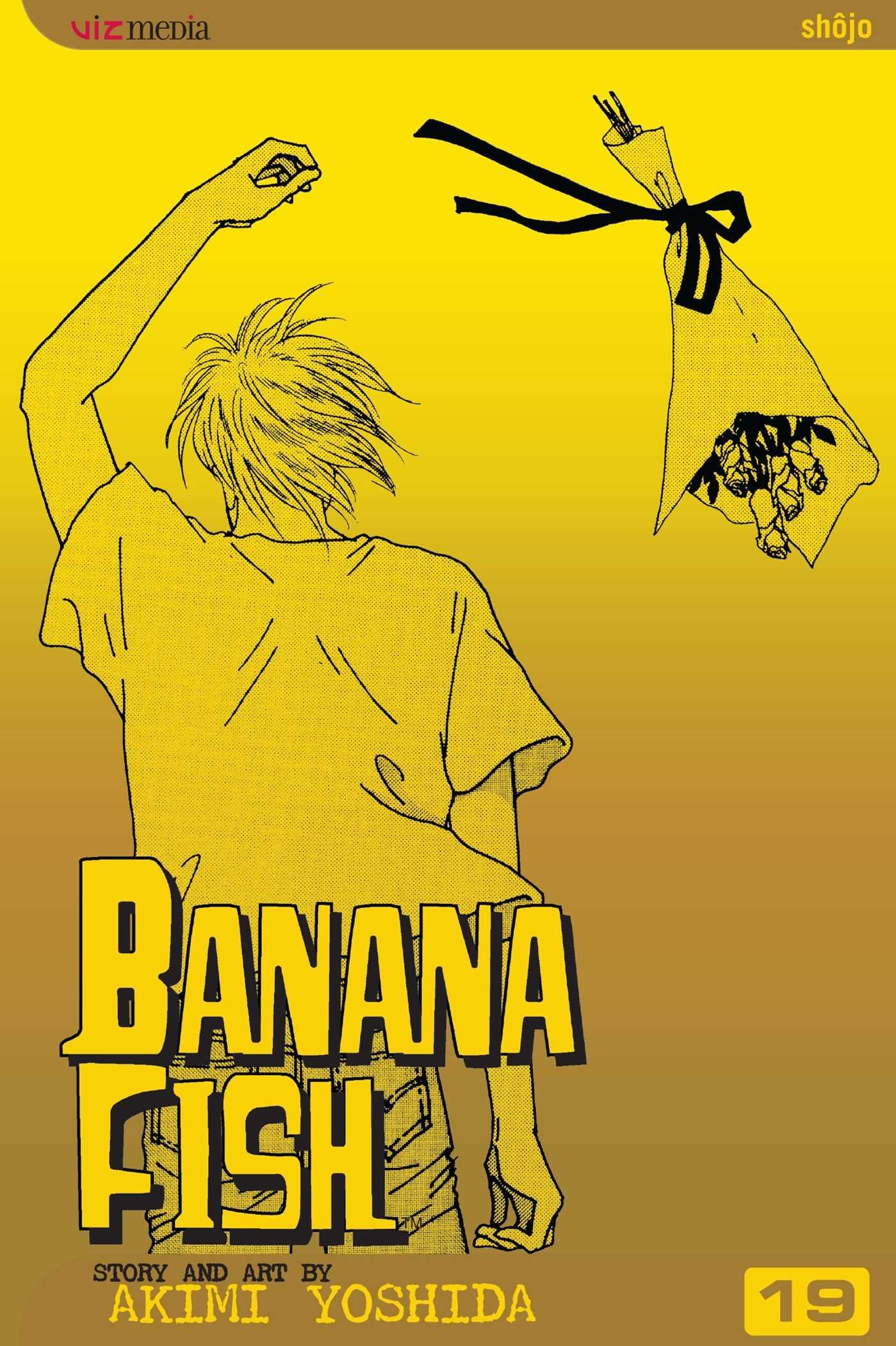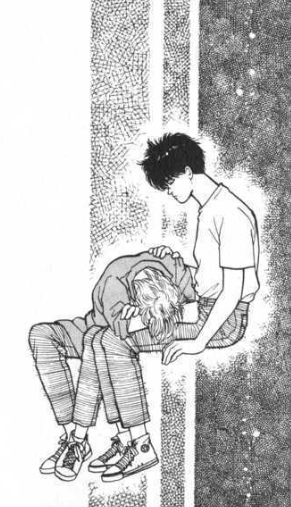If you speak to anyone who’s read Banana Fish, one of the first things they’d likely mention is the violence. As a crime thriller that follows a teenage gang leader in New York City, both the manga and the anime are violent from the get-go. The story never goes an episode or volume without threats with guns and knives, kidnapping, or murder. But amongst all the violence there’s one thing you won’t see in their entirety: the instances of the sexual assault.
Spoilers ahead for Banana Fish, manga by Akimi Yoshida and anime by studio MAPPA, and warning for mentions of sexual assault.
Trauma, especially of sexual assault, is a central theme to Banana Fish, where showing the devastating effects of power and powerlessness is integral to the story. The main character Ash Lynx was victimized as a child, taken from the streets by Corsican mafia boss Dino Golzine, and forced into child prostitution before the story begins. And during Banana Fish while Ash is a teenager, he is assaulted in prison and later by a mercenary hired by Dino.
But with the exception of a moment showing the start of the assault by the mercenary, each scene of such an attack cuts away and forces our eyes to an entirely different scene instead of showing the assault. We know an attack has happened because we see the aftermath, but we don’t see it occur. If it seems that an assault is about to happen, the scene is likely to turn into a fight instead of sexual assault.
Banana Fish is not shy about being violent, but compared to other media that shows all instances of violence, including assault, Banana Fish is much more sensitive to its framing of subject matter. It is aware that it is not only important to be aware of the content itself, but how the content is presented.
By showing the graphic details of violence of other sorts in the story, but removing the sexual assault, Banana Fish establishes that murder is commonplace in this world. They show that murder is possible so long as you have a weapon and the resolve to use it—not that you should—but that it is often the only way to survive when in a kill or be killed situation. But sexual assault is different; it is used as a tool for intimidation and exploitation against the less powerful, while keeping the victim alive.

While murder is an attempt to end a person’s life, often due to a seemingly inescapable cycle of violence—and occasionally to damage the life of that person’s loved ones—sexual assault is meant to damage the person’s psyche, their resolve, their confidence, and their sense of security and safety in their own world and in their own life. Sexual assault is never an act of defense as murder can be. It is always an act of aggression to oppress the less powerful. While murder and sexual assault are both terrible and criminal, Banana Fish shows that while murder is something that is sometimes necessary for survival in a dark underworld, sexual assault is not. Sexual assault is never necessary for survival, so in Banana Fish, it is never necessary to show it.
Compare this to the torture we see. While torture also shows the powerful exploiting the less powerful, what we see is necessary for the story to move forward. We see the titular mind-control drug administered to a character, Shorter, against his will. We see the drug in action as it overrides his ability to reason, and then we see the devastating effects of what happens to those who are powerless against the powerful: death and grief. This is different from the sexual assault in the story. Sexual assault is understood while this fictional drug and its effects are not, so it is necessary to show the incident, as readers would be confused without it.
Other media that shows violence, including acts of sexual assault, can leave the viewer with the feeling that it was extraneous and unnecessary. Banana Fish proves that it is possible to establish a dark tone and explore dark, and even disturbing subject matter, without necessarily showing the act of the traumatic incident. Leaving the depiction of the act absent does not leave you feeling that you’ve missed anything from Banana Fish. You know what has occurred without needing to see it happen. You don’t need to see it in order to understand that it was traumatic, painful, damaging, or upsetting. The absence of the assault depiction moves the focus of the narrative from the act—which often becomes a plot point that can feel exploitative on principle—to the effects on the victim.
By focusing on the act itself, media can give the impression that once a traumatic event happens, it is over. But Banana Fish shows that the lingering effects of the trauma force the event to continue by remaining present in a survivor’s daily life.
Banana Fish allows the cycle of violence to lead the narrative, provides visual cues of physical evidence, but most importantly focuses on the deep emotional impact trauma and assault leave on a survivor. While media is meant to allow us into the deepest part of a character’s mind and experience, Banana Fish respects and humanizes its main character by allowing Ash a realistic level of privacy. This means we earn our connection to the character, and earn the reveal of his pain the way a friend would, rather than intruding in a way that feels exploitative.
Showing the instance of assault can actually lessen the emotional weight for the reader. Seeing the assault can make it seem just as equal in power to everything else in the story. Removing access to something makes it more powerful and gives more weight, so that when we do learn about it, and we see the emotional ramifications, it hits us deeply.

To achieve this, Banana Fish prevents us from seeing too deeply into Ash’s psyche until he is personally ready to reveal it. While the first few episodes and volumes of the manga are packed with action and filled with violence of murder and threats, we only get glimpses of the emotional impact this is having on Ash. It is only once the other main character, Eiji—and by extent, the reader—has earned Ash’s trust that Ash is ready to speak about his pain and we see the true effects of the trauma Ash has experienced.
One of the most heartbreaking moments of Ash’s trauma comes very late in the story. After we, and Eiji, have learned everything that has happened to him, Ash is forced into several situations that push him past his breaking point. During a conversation with Dino, his abuser who refuses to let Ash be free, Ash’s stress and traumas take their toll on him and he breaks down into hysterical laughter. Witnessing this, not the trauma itself, is what allows the reader to understand the true impact of trauma on a survivor. We are only allowed to see this part of Ash after we have earned the right to, and it is so painful that it is difficult to observe.
Until then, we see Ash adopt an “act now, panic later” coping mechanism. When he is in a dangerous situation he protects himself however he can, even if he must kill to survive, or else to wait in frustration for a chance to escape. It is only later that he feels the effects: depression, self-repulsion, nightmares, trouble sleeping, and a hesitation to reach out to those who might support him.
While Banana Fish can be an emotional and disturbing ride, it is impactful and deeply moving. The characters are real and relatable, especially in the handling of trauma. No media is perfect, but Banana Fish’s depiction of trauma will forever inform the standard by which I hold media.